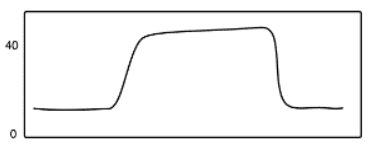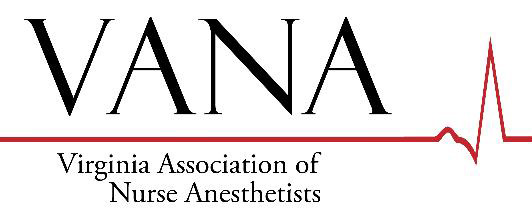NCE Boards Questions
- Which Mapleson Circuit is best for spontaneous ventilation?
- A
- B
- C
- D
- E
- F
- While providing anesthesia with a circle system, you observe this waveform. What is the BEST course of action at this time?
- Replace the CO2 absorbent
- Increase the patient’s minute ventilation
- Replace the water trap on the EtCO2 monitor
- Increase the FGF in excess of the patient’s minute ventilation and convert to a semi-open system
- What test can be done to ensure the competence of a Bain circuit?
- Pendleton Test
- Pethick Test
- Bain test
- Porter Leak Test
- You see the following capnogram on the monitor during a tumor debulking case in which the patient is intubated and paralyzed. The surgeon says that you have at least another 90 minutes in the case. What is the best course of action?
- Increase the FGF in excess of minute ventilation
- Re-dose the neuromuscular blocker
- Assess the inspiratory valves
- Pull back on the ETT about 1-2 cm then listen for bilateral lung sounds
- Which of the following can lead to falsely high oxygen saturation values. Select all that apply:
- Sickled hemoglobin
- Severe anemia
- Carboxyhemoglobin (COHb)
- Elevated Glycohemoglobin A1C
- Dark environment/low ambient light
- Venous Congestion
- All of the following pathways are correct except?
- GPCR – Gαi – inhibits adenylyl cyclase – cAMP – PKA
- GPCR – Gαs – stimulates adenylyl cyclase – cAMP – PKA
- GPCR – Gαq – phospholipase C – PIP2 – DAG – PKC
- GPCR – Gαq – PIP2 – phospholipase C – Binds to IP3 receptor on Ca2+ channel – Ca2+ released
- Which form of phenobarbital is most likely to cross the gastrointestinal mucosa and be absorbed?
- The HA form
- The A- form
- The acid and base forms are equally likely to cross the GI mucosa
- Neither form can cross the GI mucosa
- Which of the following patients are at a higher risk of developing PONV? Select 2:
- Adults 55 and older
- Children 3 years – puberty
- Smokers
- Anxious patients
- IV extravasation leading to vascular necrosis is a rare but serious side effect of which anti-emetic?
- Ondansetron (Zofran)
- Promethazine (Phenergan)
- Meclizine (Antivert)
- Aprepitant (Emend)
- Which of the following factors will contribute to a faster onset of anesthetic gas? Select all that apply:
- High solubility
- High alveolar ventilation
- Low FRC
- Low anatomic dead space
- High cardiac output
- Low Pa-Pv difference
- Which of the following are contraindications of using sevoflurane? Select all that apply:
- Severe hypovolemia
- Past medical history of malignant hyperthermia
- Severe hypotension
- Tachycardia
- Intracranial hypertension
- You suspect your patient has malignant hyperthermia. Which of the following would be appropriate actions?
- Give Ryanodex 5mg/kg
- Treat hyperkalemia with calcium, bicarb, and glucose/insulin
- Give 100% oxygen and convert to a semi-open system, keeping the anesthetic the same
- Give calcium channel blockers to treat hypertension
- Which of the following tachyarrhythmias are responsive to cardioversion? Select 2:
- PAT
- AVNRT
- AVRT
- MAT
- Junctional Tachycardia
- A posterior infarct can be seen as reciprocal changes in which of the following leads?
- V4, V5, V6
- Lead II, Lead III
- V1, V2, V3
- aVL, aVF
- Which opioid receptor, when stimulated, provides analgesia without producing constipation or respiratory depression?
- Mu
- Kappa
- Delta
- Gamma


Answers:
- a
- d Note: The capnogram indicates an exhausted soda lime however, not every machine allows for changing CO2 absorbent during the case. Converting to a semi-open system will ensure the immediate safety of the patient.
- b
- b Note: Curare clefs indicate the patient is attempting spontaneous breaths while on the ventilator.
- c & d
- d Note: the correct pathway is: GPCR Gαq phospholipase C PIP2 IP3 Binds to IP3 receptor on Ca2+ channel Ca2+ released
- a Note: HA is the acid form
- b & d
- b – promethezine
- 1b, c, d, f
- 1a,b,e
- b – Treat hyperkalemia with calcium, bicarb, and glucose/insulin. Note: Give Ryanodex 2.5mg/kg
- b & c – AVNRT and AVRT
- c – V1, V2, V3
- b – kappa

